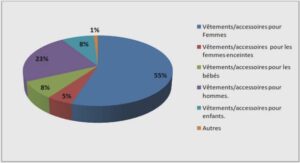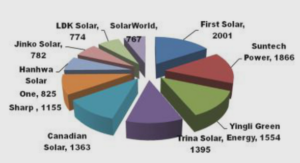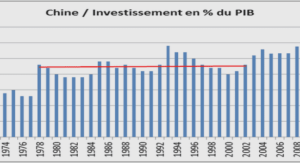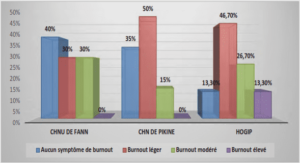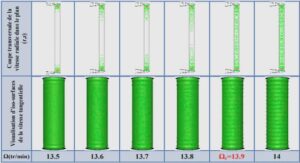Qualitative study of solutions for certain fractional
differential equations
Multivalued Analysis
In this section, we introduce some definitions, notations, and preliminary facts for multivalued analysis, which are used throughout this thesis. Definition 1.22 ([28]) Let (X, k.k) and (Y, k.k) two Banach spaces. A multivalued function F (or a set valued map, multivalued map ) from X into P (Y ) is a correspondence that associates to each element x ∈ X a subset F (x) of Y . We denote this correspondence by the symbol F : X → P (Y ). We define 1) The effective domain DomF = {x ∈ X, F (X) 6= ∅} . 2) The graph Gr (F) = {(x, y) ∈ X × Y, x ∈ DomF, y ∈ F (x)} . 3) The image of the set A ∈ P (X) : F (A) = x ∈ ∪x∈AF (x). 4) The inverse image of the set B ∈ P (Y ) : F −1 (B) = {x ∈ X : F (x) ∩ B = ∅} . 5) The multivalued map F : X → P (Y ) is convex (closed, compact) valued if F (x) is convex (closed, compact) for all x ∈ X. 6) F is bounded on bounded sets if F (B) = ∪x∈B F (x) is bounded in Y for all bounded set B of X, i.e., sup x∈B {sup {kyk : y ∈ F (x)}} < ∞. 7) F is called upper semi-continuous (u.s.c for short) on X if F −1 (A) is closed in X whenever A ⊂ X is closed. 8) F is said to be completely continuous if F (B) is relatively compact for every bounded subset B of X. 9) A multivalued map F : X → P0 (Y ) ( where P0 (Y ) = {A ∈ P0 (Y ), A 6= ∅}) is said to be measurable if for every open U ⊂ X the set F −1 (U) is a measurable set. 10) F has a fixed point if there exists x ∈ X such that x ∈ F (x). The fixed point set of the multivalued operator F will be denoted by F ix F. For each y ∈ C ([a, b] , R), the set of selections of F at point y is defined by SF,y = v ∈ L 1 ([a, b] , R) : v (t) ∈ F (t, y) for a.e. t ∈ [a, b] . In the following, by Pp we denote the set of all nonempty subsets of X which have the property ”p” where ”p” will be bounded (b), closed (cl), convex (c), compact (cp) etc. Thus Pb (X) = {A ∈ P (X) : A is bounded}, Pcl (X) = {A ∈ P (X) : A is closed}, Pcp (X) = {A ∈ P (X) : A is compact}, and Pcp,c (X) = {A ∈ P (X) : A is compact and convex}. Definition 1.23 ([28]) A multivalued map F : [a, b]×R → P (R) is said to be Carath´eodory if 1) t → F (t, x) is measurable for each x ∈ R, 2) x → F (t, x) is uppe semi-continuous for almost all t ∈ [a, b]. Further, a Carath´eodory function F is called L 1 -Carath´eodory if 1.6. Multivalued Analysis Chapter 1. Preliminaries and Background Materials 24 3) for each ρ > 0, there exists ϕρ ∈ L 1 ([a, b] , R +) such that kF (t, x)k = sup {|v| : v ∈ F (t, x)} ≤ ϕρ (t), for all kxk ≤ ρ and for a.e. t ∈ [a, b]. Lemma 1.21 ([47]) Let (E, d) be a metric space induced from the normed space (X, k.k). Consider Hd : P (X) × P (X) → R + ∪ {∞} given by Hd (A, B) = max sup a∈A d (a, B),sup b∈B d (A, b) , where d (A, b) = infa∈A d (a, b) and d (a, B) = infb∈B d (a, b). Then (Pb,cl (X), Hd) is a metric space. Definition 1.24 ([28]) A multivalued operator N : X → Pcl (X) is called (a) γ-Lipschitz if and only if there exists γ > 0 such that Hd (N (x), N (y)) ≤ γd (x, y) for each x, y ∈ X. (b) A contraction if and only if it is γ-Lipschitz with γ < 1. Lemma 1.22 ([28], Proposition 1.2) If F : X → Pcl (Y ) is u.s.c., then Gr (F) is a closed subset of X × Y , i.e., for every sequence {xn}n∈N ⊂ X and {yn}n∈N ⊂ Y , if when n → ∞, xn → x∗, yn → y∗ and yn ∈ F (xn). then y∗ ∈ F (x∗). Conversely, if F is completely continuous and has a closed graph, then it is upper semi-continuous. Lemma 1.23 ([63]) Let X be a separable Banach space. Let F : [a, b]×X → Pcp,c (X)be an L 1 -Carath´eodory multivalued map and let Θ be a linear continuous mapping from L 1 ([a, b] , X) to C ([a, b] , X). Then the operator Θ ◦ SF : C ([a, b] , X) → Pcp,c (C ([a, b] , X)), x → (Θ ◦ SF ) (x) = Θ (SF,x), is a closed graph operator in C ([a, b] , X) × C ([a, b] , X). For more details on multivalued maps and the proof of the known results cited in this section, we refer the interested reader to the books by Deimling [28], Gorniewicz [35] and Hu and Papageorgiou [40]. 1.7 Fixed point theorems The theory of fixed points is one of the most powerful tools of modern mathematics, which used to show the existence and uniqueness of fixed points of various kinds of equations. Throughout this study, we convert the given problem into an equivalent integral equation and then use the appropriate fixed point theorem such that the fixed points obtained are thus the solutions of the given problem. In this section we collect the fixed point theorems which are used in the proofs of our main results. We start with the definition of a fixed point.
Fixed point theorems
Definition 1.25 For a mapping Φ of a set E Into itself, an element x of E is a fixed point of Φ, if Φ (x) = x. Theorem 1.2 (Banach’s fixed point theorem [88]) Let Ω be a non-empty closed subset of a Banach space (X, k.k), then any contraction mapping Φ of Ω into itself has a unique fixed point. Theorem 1.3 (Schauder’s fixed point theorem [88]) Let Ω be a nonempty closed bounded convex subset of a Banach space X and Φ : Ω → Ω be a continuous compact operator. Then Φ has a fixed point in Ω. Theorem 1.4 (Schaefer’s fixed point theorem [88]) Let X be a Banach space, and Φ : X → X is completely continuous operator. If the set Bλ = {x ∈ X : x = λΦx, λ ∈ (0, 1)} is bounded. Then Φ has fixed point in X. Theorem 1.5 (Krasnoselskii’s fixed point theorem [88]) Let Ω be a non-empty closed bounded convex subset of a Banach space (X, k.k). Suppose that F1 and F2 map Ω into X such that 1) F1x + F2y ∈ Ω for all x, y ∈ Ω, 2) F1 is continuous and compact, 3) F2 is a contraction with constant l < 1. Then there is a x ∈ Ω with F1x + F2x = x. Theorem 1.6 (M¨onch’s fixed point theorem [5]) Let Ω be a bounded, closed and convex subset of the Banach space such that 0 ∈ Ω, and let Φ be a continuous mapping of Ω into itself. If the implication V = conv Φ (V ) or V = Φ (V ) ∪ {0} ⇒ µ (V ) = 0, holds for every V of Ω, then Φ has a fixed point. Theorem 1.7 (Nonlinear alternative of Kakutani maps [34]) Let Ω be a closed convex subset of a Banach space X and U be an open subset of Ω with 0 ∈ U. Suppose that N : U → Pcp,c (Ω) is an upper semi-continuous compact map. Then either (i) N has a fixed point in U, or (ii) there is a x ∈ ∂U and µ ∈ (0, 1) with x ∈ µN (x). Theorem 1.8 (Covitz and Nadler fixed point theorem [26]) Let (E, d) be complete metric space. If N : E → Pcl (E) is a contraction, then F ix N 6= ∅. 1.8 Ulam’s stability The stability of the Ulam can be viewed as a special kind of data dependence which was initiated by the Ulam in [97]. Rassias in [80] extended the concept of Ulam-Hyers stability. 1.8. Ulam’s stability Chapter 1. Preliminaries and Background Materials 26 In latest years, many authors discussed Ulam-Hyers stability problem for various types of fractional integral and fractional differential equation using different techniques, for more details see [2, 12, 21, 70, 98] and the references therein. To define Ulam’s stability, we consider the following fractional differential equation HD α,β;ψ 0+ x (t) = f (t, x (t)), t ∈ [0, T] . (1.4) Definition 1.26 ([83]) The equation (1.4) is said to be Ulam-Hyers stable if there exists a real number k > 0 such that for each > 0 and for each y ∈ C ([0, T] , R) solution of the inequality HD α,β;ψ 0+ y (t) − f (t, y (t),) ≤ , t ∈ [0, T] , (1.5) there exists a solution x ∈ C ([0, T] , R) of the equation (1.4) with |y(t) − x (t)| ≤ k, t ∈ [0, T] . Definition 1.27 ([83]) Assume that y ∈ C ([0, T] , R) satisfies the inequality in (1.5) and x ∈ C ([0, T] , R) is a solution of the equation (1.4). If there is a function φf ∈ C (R +, R +) with φf (0) = 0 satisfying |y(t) − x (t)| ≤ φf (), t ∈ [0, T] . Then the equation (1.4) is said to be generalized Ulam-Hyers stable. Definition 1.28 ([83]) The equation (1.4) is said to be Ulam-Hyres-Rassias stable with respect to φf ∈ C ([0, T] , R +) if there exists a real number k > 0 such that for each > 0 and for each y ∈ C ([0, T] , R) solution of the inequality HD α,β;ψ 0+ y (t) − f (t, y (t)) ≤ φf (t), t ∈ [0, T] , (1.6) there exists a solution x ∈ C ([0, T] , R) of the equation (1.4) with |y(t) − x (t)| ≤ kφf (t), t ∈ [0, T] . Definition 1.29 ([83]) Assume that y ∈ C ([0, T] , R) satisfies the inequality in (1.6) and x ∈ C ([0, T] , R) is a solution of the equation (1.4). If there exists a constant k > 0 such that |y(t) − x (t)| ≤ kφf (t), t ∈ [0, T] . Then the equation (1.4) is said to be generalized Ulam-Hyres-Rassias stable. Remark 1.1 If there is a function v ∈ C ([0, T] , R) (dependent on y), such that 1) |v (t)| ≤ , for all t ∈ [0, T], 2) HD α,β;ψ 0+ y (t) = f (t, y (t)) + v (t), t ∈ [0, T]. Then a function y ∈ C ([0, T] , R) is a solution of the inequality (1.5). 1.8. Ulam’s stability Chapter 2 Existence and uniqueness results for two classes of nonlinear fractional differential equations In this chapter, we are concerned with the existence and uniqueness of solutions for two classes of nonlinear fractional differential equations. In section 2.1, we study the existence and uniqueness of mild solutions of a boundary value problem for Caputo-Hadamard fractional differential equations with integral and anti-periodic conditions. In section 2.2, we establish sufficient conditions for the existence and uniqueness of solutions for nonlinear implicit Riemann-Liouville fractional differential equations with nonlocal conditions. our results are obtained via fixed point theorems. An example demonstrating the effectiveness of the theoretical results is presented at the end of each section. 2.1 Existence and uniqueness of mild solutions of boundary value problems for Caputo-Hadamard fractional differential equations with integral and anti-periodic conditions In this section, we study the existence and uniqueness of mild solutions for a nonlinear fractional differential equation with integral and anti-periodic conditions as follows C HDα 1+x (t) = f (t, x (t)), t ∈ (1, T), (2.1) x (1) + x (T) = b Z T 1 x (s) ds s , (2.2) where f : [1, T] × R → R is a continuous function, C HDα 1+ is the Caputo-Hadamard fractional derivative of order 0 < α < 1 and b ∈ R such that 2−b log (T) > 0. To show the existence and uniqueness of solutions, we transform the problem (2.1)-(2.2) into an integral equation and then use the Schaefer fixed point theorem to prove the existence result, while the uniqueness is demonstrated by using the Banach’s contraction mapping principle. At the end of each section, An example demonstrating the effectiveness of the theoretical results is presented.
Existence results
First, we start by defining what we mean by a solution of the boundary value problem (2.1)-(2.2). Definition 2.1 Let J = [1, T], A function x ∈ C (J, R) is said to be a mild solution of the problem (2.1)-(2.2) if x satisfies the corresponding integral equation of (2.1)-(2.2). For the existence of solutions for (2.1)-(2.2), we need the following auxiliary lemma. Lemma 2.1 Let ∆ = 2 − b log (T), x ∈ C (J, R) and x 0 exists. If x is a solution of the boundary value problem (2.1)-(2.2), then x is a solution of the integral equation x(t) = 1 Γ (α) Z t 1 log t s α−1 f (s, x (s)) ds s + b ∆Γ (α) Z T 1 Z s 1 log s σ α−1 f (σ, x (σ)) dσ σ ds s − 1 ∆Γ (α) Z T 1 log T s α−1 f (s, x (s)) ds s , for t ∈ [1, T] . (2.3) Proof. Suppose x satisfies the problem (2.1)-(2.2). Then, by applying HI α 1+ to both sides of (2.1), we have HI α 1+
1 Preliminaries and Background Materials |
